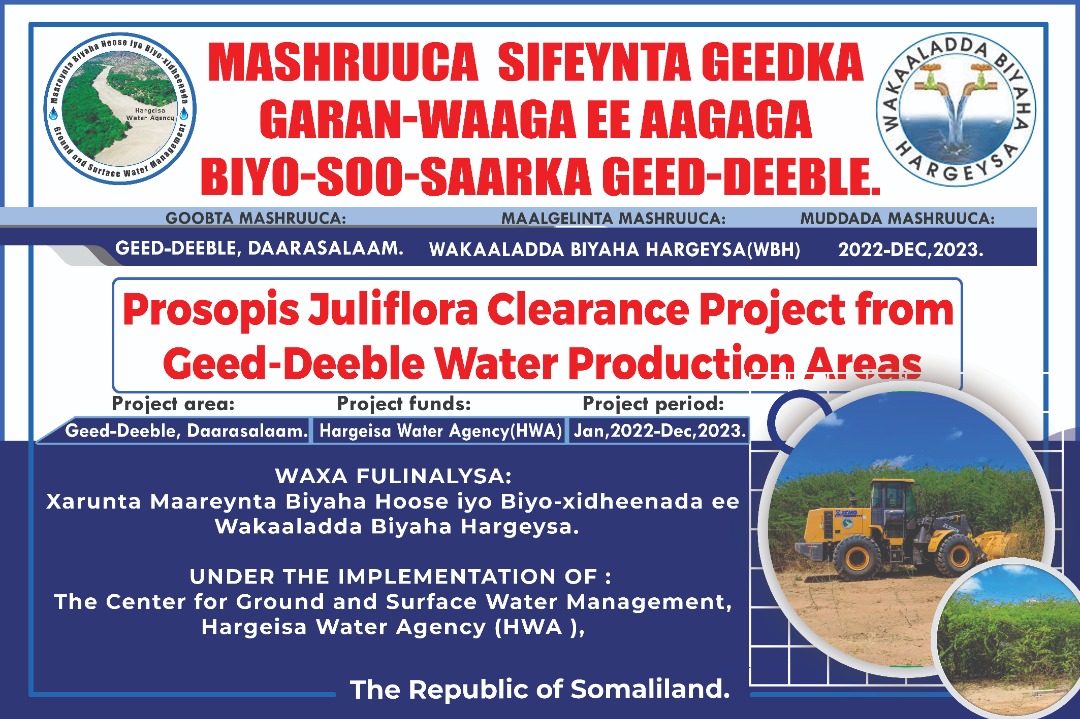
Hargeisa Water Agency established The Prosopis Juliflora Clearance Project for Geed-Deeble Water Production Areas in January 2023, this project is being implemented under The Center for Ground and Surface Water Management in Hargeisa Water Agency (HWA).
This project has been established to control the adverse impacts that the Prosopis have on the water catchment areas and the surrounding environment.
Prosopis Juliflora (Garan-waa), is an evergreen plant and one of the most invasive species that cause environmental and economic degradation in arid and semi-arid areas. It spreads rapidly in croplands, rangelands, and forests. This invasive species is threatening pastoral and agro-pastoral communities and livelihoods in Somaliland.
Prosopis Juliflora consumes excessive amounts of water as the rate of transpiration by individual Prosopis trees ranges from 1-36 L/per day, with an average of 7 L per day(Shiferaw et al., 2021). This invader along with the severe effects of climate change, such as the shortage in rainfall and severe droughts will lead to a decrease in the water level.
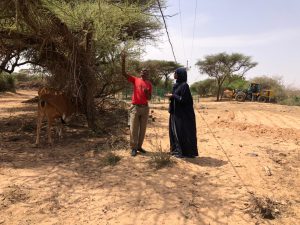
This invasive plant promotes land degradation and affects animals and biodiversity(Shiferaw et al., 2021). Studies have also found that Prosopis lowers the water table and starves other plants from moisture and nutrient due to its invasive properties(Abdulahi et al., 2017). Locals of Geed-Deeble such as Adan Daahir Xuseen (Figure1), one of the Geed -Deeble inhabitants and the operator of Borehole 3, told us about the adverse effects that the Prosopis has on our land and animals, as he said that many animals got sick, and some died to its prolonged consumption. We also asked him about the native trees that could survive the invasive nature of the Prosopis, and he suggested (Gob, Galool, Daray, Sogsog, and Qudhaa).
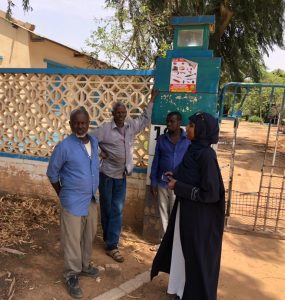
The Director of Water Production in Geed-Deeble Abib Osman Bade, also talked about the effect that the Prosopis has on the water production system, as he said ‘The root system of the Prosopis blocks the pipes and raps itself to the pumps and the different types of machinery underground, it also blocks the boreholes’ in Figure 2. Therefore, the effects of Prosopis are not only limited to the natural settings but also the artificial ones, it is invasive in a way that disrupts the environmental water, fauna and flora, and man-made machinery and systems.
To limit the excessive water absorption of Prosopis in the era of climate change and shortage in rainfall, the HWA team under the direction of General Manager Mohamed Darod, has put an action plan to control the Prosopis. Therefore, after a careful review of the control methods of the Prosopis (physical, chemical, and biological), the HWA Prosopis team decided to disregard the chemical and biological methods as they could pose a risk to the biodiversity and the environment, and move forward with the physical control method as it was found to be the safest. The physical control method includes cutting deeply rooted trees and shrubs. This process requires a wheel loader (Figure 4) for the trees and laborers for the shrubs. Moreover, HWA has provided personal protective equipment (PPE), such as eye goggles, thick shoes, and hand gloves for the laborers to ensure their safety while performing their duties. Since the plan started, the locals have witnessed a huge positive change in the environment. The animals started enjoying the space as the Prosopis have restricted access to many areas, they also shade under the trees and feed on useful plants that have not been visible to them before.
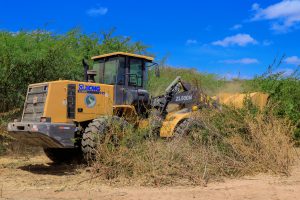
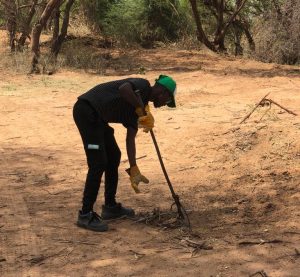
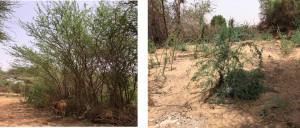
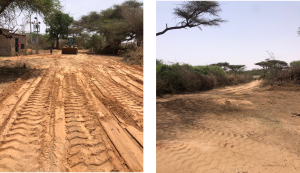
Author: Muna Abdalla Ismail, The Director of the Center for Ground and Surface Water Management at Hargeisa Water Agency. 20-07-2022
muna.ismail@hargeisawateragency.com
References:
Abdulahi, M. M., Ute, J. A., & Regasa, T. (2017). Prosopis Juliflora l: Distribution, impacts and available control methods in Ethiopia. Tropical and Subtropical Agroecosystems, 20(1), 75–89.
Shiferaw, H., Alamirew, T., Dzikiti, S., Bewket, W., Zeleke, G., & Schaffner, U. (2021). Water use of Prosopis juliflora and its impacts on catchment water budget and rural livelihoods in Afar Region, Ethiopia. Scientific Reports, 11(1), 1–14. https://doi.org/10.1038/s41598-021-81776-6












